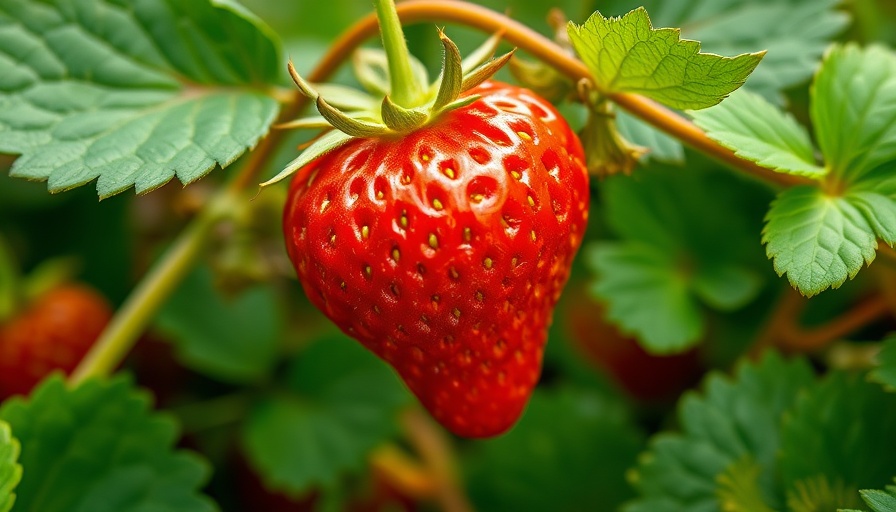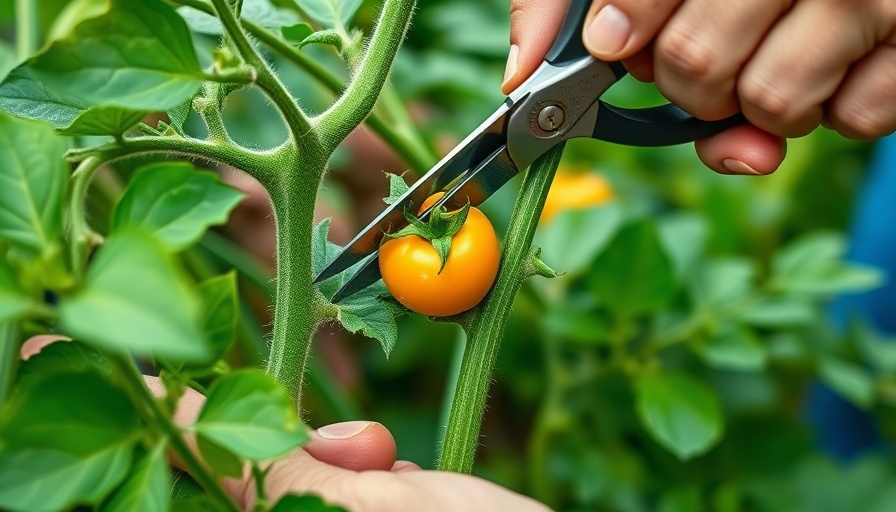
Exploring the World of $20 Strawberries: A Gardener's Delight
The emergence of the coveted $20 strawberry has caught the attention of gardeners and sweet-toothed enthusiasts everywhere. Developed in Japan, these luxurious strawberries—which can be seen trending on platforms like TikTok—are known for their extraordinary sweetness, perfect texture, and ideal size. With the promise of replicating their cultivation methods at home, it's no wonder that gardeners in the Okanagan and beyond are curious about how to grow these exquisite fruits.
In $20 Strawberries?! The Wild Science of Growing Luxury Berries, the discussion dives into the meticulous process of cultivating these prized fruits, exploring key insights that sparked deeper analysis on our end.
Understanding the Basics: The True Science Behind Luxury Berries
To truly appreciate the allure of these strawberries, one must first understand the meticulous cultivation process developed by the Japanese Horticultural Society. Growing these strawberries—referred to as ame-iro (雨色) strawberries—requires attention to detail that borders on obsessive. Key elements in cultivation include:
- pH Levels: Achieving a pH level of 6 is crucial for the nutrient uptake that enhances the flavor profile of the fruit. While this might be challenging in traditional garden beds, container or hydroponic gardening allows for better control.
- Sunlight: Strawberries require 6-8 hours of direct sunlight, found in ideal climates, to flourish. Too much sunlight can lead to dehydration, while too little results in a lack of essential nutrients.
- Temperature Control: Temperature regulation is essential, with optimal growth occurring between 20°C and 25°C. This not only aids in nutrient absorption but also prevents damage from excess water evaporation, keeping berries lush and flavorful.
The Art of Fertilization: Nourishing Your Berries
The choice of fertilizer plays a significant role in producing top-tier strawberries. In contrast to traditional fertilizers, a synthetic liquid bloom formula is highly recommended for its immediacy in nutrient availability, making it easier to manage within container or hydroponic systems. This allows for a focused approach to feeding the plants, ensuring they receive the right nutrients at the right time.
Water Management: The Key to Success
A constant supply of moisture is integral to cultivating $20 strawberries. A dripper system is often employed to regulate water flow efficiently; this method precludes undesirable root conditions, such as suffocation or drought. Regular monitoring ensures that the plants remain healthy without falling prey to extremes of wet or dry conditions.
Pest Prevention: Maintaining Pristine Fruit Quality
The health of these elite strawberries is paramount, and preventative measures against pests like aphids, spider mites, and fruit flies are strictly enforced. Employing practices such as reflective mulch and scheduled applications of neem oil or insecticidal soap helps safeguard berries from possible damage. Even the slightest blemish can disqualify a strawberry from being deemed worthy of its steep price.
Choosing the Right Berries: A Selective Approach
Pruning is not merely an aesthetic choice in the quest for quality strawberries. Gardeners are advised to selectively prune flowers and immature fruits, redirecting the plant's energy toward the most promising specimens. While it can be tempting to let nature take its course, those aspiring to replicate the Japanese success in strawberry cultivation must embrace the philosophy of quality over quantity.
Growth Beyond Strawberries: Apply These Techniques to Other Fruits
The principles behind growing Japanese strawberry varieties extend well beyond just berries. These guidelines are applicable to a variety of fruits, vegetables, and flowers. With the right environment and obsessive attention to detail, the garden becomes a haven for diverse plant life. For Okanagan gardeners who might be hesitant, this experimentation opens the doors to new flavors and experiences right in their backyards.
If you are excited about taking your gardening skills to the next level, consider utilizing online classes, like those offered by Skillshare. As gardening can sometimes feel overwhelming, the knowledge gained from educational platforms can help enhance your understanding, whether learning about nutrients, pest control, or even personal motivations, like the Japanese concept of ikigai.
Conclusion: The Joy of Growing Your Own $20 Strawberries
The ultimate satisfaction from growing your own luxury strawberries comes not just from the product but from the journey of discovery and mastery. Whether it’s soaking up the necessary sunlight, mastering pH levels, or combating pests, each of these elements provides an avenue for growth—both for plants and the gardener. For those in the Okanagan looking to cultivate their green thumbs, the art of growing $20 strawberries is just a few steps away.
 Add Row
Add Row  Add
Add 




Write A Comment